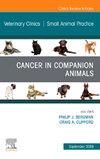危重病人的液体疗法
IF 2
3区 农林科学
Q2 VETERINARY SCIENCES
Veterinary Clinics of North America-Small Animal Practice
Pub Date : 2025-09-22
DOI:10.1016/j.cvsm.2025.08.006
引用次数: 0
摘要
危重患者由于内皮糖萼损伤、心肌功能障碍、血管截瘫、肾功能障碍、血管通透性增加和低白蛋白血症,可能有较高的液体过载和间质水肿发展的风险。虽然等渗晶体通常用于低血容量性休克的复苏,但应限制在危重患者中使用,以避免并发症,包括间质水肿的发展。在失血性休克复苏时应考虑血液制品,以限制所需晶体的体积。为了限制与液体给药相关的风险,液体复苏应以液体反应性为指导。本文章由计算机程序翻译,如有差异,请以英文原文为准。
Fluid Therapy in the Critically Ill Patient.
Critically ill patients may be at higher risk for fluid overload and the development of interstitial edema due to damage to the endothelial glycocalyx, myocardial dysfunction, vasoplegia, renal dysfunction, increased vascular permeability, and hypoalbuminemia. While isotonic crystalloids are commonly used for resuscitation of hypovolemic shock, their use should be limited in critically ill patients to avoid complications, including the development of interstitial edema. Blood products should be considered for resuscitation of hemorrhagic shock to limit the volume of crystalloids required. To limit risks associated with fluid administration, fluid resuscitation should be guided by fluid responsiveness.
求助全文
通过发布文献求助,成功后即可免费获取论文全文。
去求助
来源期刊
CiteScore
3.80
自引率
0.00%
发文量
123
审稿时长
18-36 weeks
期刊介绍:
Veterinary Clinics of North America: Small Animal Practice offers you the most current information on the treatment of small animals such as cats and dogs, updates you on the latest advances, and provides a sound basis for choosing treatment options. Published bi-monthly—in January, March, May, July, September, November—each issue focuses on a single topic in small animal practice, including endocrinology, fluids and electrolytes, gastroenterology, infectious diseases, neurology, oncology, urology, respiratory issues , surgical information, small animal behavior, laboratory medicine, imaging methods, and nutrition.

 求助内容:
求助内容: 应助结果提醒方式:
应助结果提醒方式:


